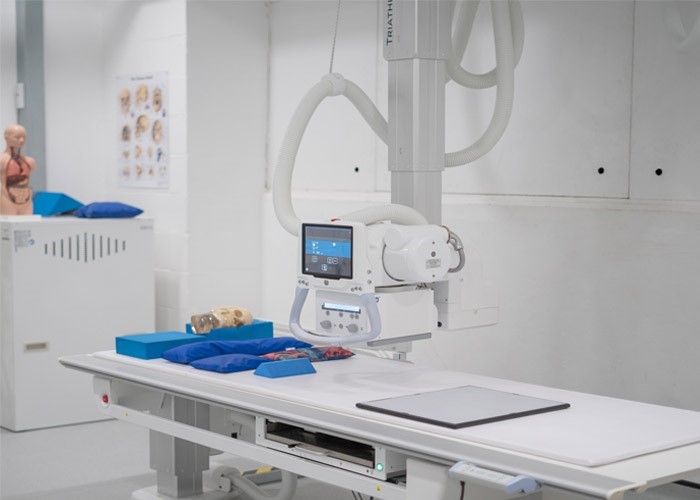We outline the current problems facing the breast imaging and diagnositic workforce, which is essential for treating breast cancer.
We outline the current problems facing the breast imaging and diagnositic workforce, which is essential for treating breast cancer.

An overstretched workforce
For several years, we’ve been concerned that the breast imaging and diagnostic workforce is overstretched and under severe pressure. Increased demand for breast services with an ageing population is worsened by persistent shortages in the workforce.
The breast imaging and diagnostic workforce is made up of different dedicated healthcare professionals, including breast radiologists and radiographers. This workforce is essential for early diagnosis of breast cancer, as well as in treatment planning.
Research from the Royal College of Radiologists shows that one in four trusts or health boards across the UK have at least one vacant consultant breast radiologist post.
Worryingly this situation is unlikely to improve soon, with vacancies set to increase with a quarter of consultant breast radiologists forecast to retire over the next five years.
Whilst there have been some attempts to address workforce shortages, these have not kept pace with staffing requirements. And workforce issues are now more acute due to the pandemic.
The impact of COVID-19
Coronavirus has caused serious disruption to screening services. A significant backlog has developed because services were suspended at the peak of the pandemic. We are warning that nearly one million women in the UK have missed NHS breast screening due to COVID-19.
We spoke to Mary Wilson, Consultant Breast Radiologist at the Nightingale Centre, Wythenshawe Hospital, and Lead for the National Breast Imaging Academy Project, who said:
“Screening diagnoses around 19,000 breast cancers a year in England and there has already been a delay of over four months in the programme. To not only maintain pre-pandemic levels of activity, but also do a huge catch up with inadequate workforce levels is an enormous mountain to climb.”
“Our most valuable asset is our staff – we simply have to invest in them. We desperately need more radiologists. You can’t make a radiologist quickly, so a long-term investment plan is essential. There’s no overnight fix. As a nation we must recognise and address the workforce issues and invest in the NHS which throughout the pandemic has done a fantastic job. But we now really do need ongoing support.”
Dr Caroline Rubin, Clinical Radiologist also echoed Mary Wilson’s views:
“Across the board it has been extremely challenging for the workforce. Ultimately, we are significantly under-resourced…The NHS can’t squeeze much more out of us; more equipment can be given but you can’t run it without a fully resourced workforce.”
We know that the number of people referred to see a specialist with suspected cancer declined dramatically during the peak of the coronavirus outbreak in April, with a drop of around 70% across all cancers being reported in some parts of the UK.
As the number of referrals to see a cancer specialist continues to recover there is likely to be an increased demand for imaging and diagnostics which threatens to overwhelm these services.
The future of the imaging and diagnostic workforce
With an already overstretched workforce, it is vital that that the recovery plans being developed by governments and the NHS across the UK set out how this expected surge in demand will be managed and recognise the needs of the workforce. This is crucial so people are diagnosed and start treatment for their breast cancer as soon as possible.
The new NHS People Plan for 2020/21 published in July 2020 does recognise the severe pressures the NHS workforce has been under during the pandemic and sets out broad ambitions to recruit more staff. However, it does not go far enough in addressing the enormity of the crisis facing the cancer workforce.
Professor Sir Mike Richard’s latest report into ‘Diagnostics: Recovery and Renewal’ calls for a major expansion of diagnostic services including in the imaging workforce, with an increase in radiologist and radiographer roles – both crucial parts of the breast cancer workforce. We welcome Sir Mike Richard’s calls but, we know that to make these recommendations a reality, major investment is urgently needed.
The Government has announced there will be an autumn Comprehensive Spending Review (CSR). The CSR sets out the long-term budget for each government department, determining what funding will be available for the NHS as it starts to rebuild after the peak of the pandemic.
This is our opportunity to call for more funding to support the breast imaging and diagnostic workforce and make Sir Mike Richard’s recommendations a reality. You can support our call by emailing your MP today.
Help us press play on recruiting and training more NHS staff by emailing your MP today.